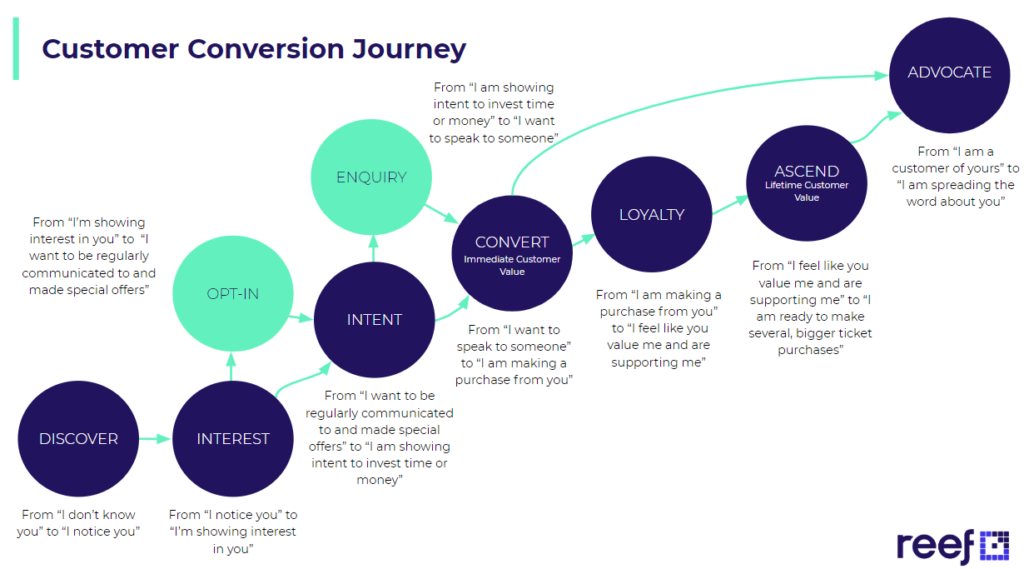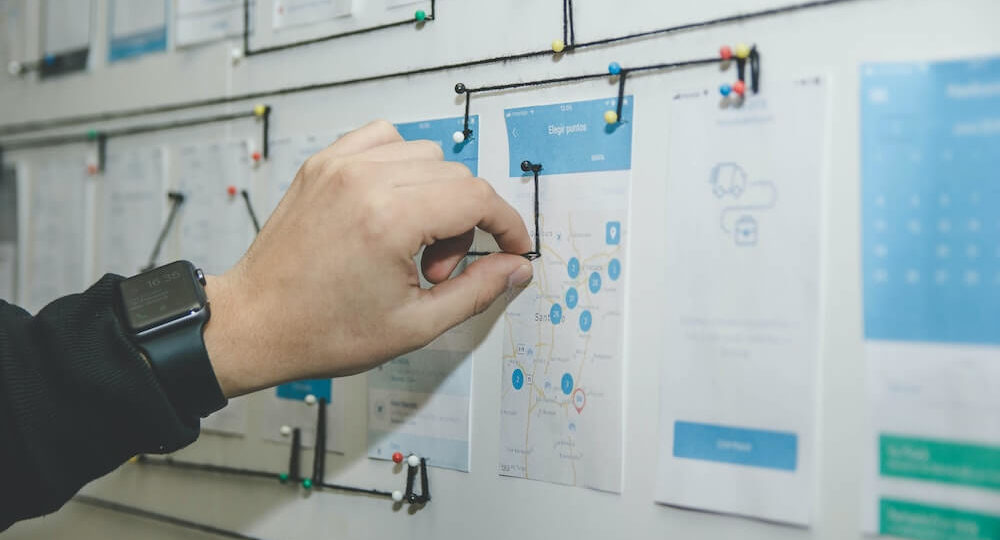Video Script
Hi and welcome to another video in the series where we show you how to drive growth and competitive advantage by using digital marketing at each stage of the Customer Conversion Journey™.
In this video we’re going to focus on conversion optimisation (which applies to all stages).

—
When you think of conversion optimisation what do you think?
Running split tests?
Moving elements around on a page or changing the colour of buttons?
Improving the conversion rate of the website?
That conversion optimisation is carried out based on a black box of best practices, maybe combined with the gut instinct of the optimiser?
Well, I’m sure for some people, that might be how conversion rate optimisation works, but true, effective conversion optimisation tends to follow a methodical process.
Best practices and the skill and experience of the optimiser, fuel the performance and outcomes rather than dictate the methodology and approach.
So in this video we’re going to walk through what you should expect to see from a professional conversion optimisation process.
The Process of Conversion Rate Optimisation
Don’t jump straight in and start running tests.
Also, don’t immediately focus on the conversion rate of the entire website.
Step 1: Identify Business Objectives
Before you do anything, start by identifying the business objectives that you want to achieve through effective conversion optimisation.
The question to ask is: “What metrics do we want to increase?”
Don’t worry about how you achieve this right now. Just identify the metrics you want to improve.
Step 2: Questions
Put yourself in the prospect’s shoes and move through the Customer Conversion Journey
As you do this, note down as many questions as you can think of from the user’s perspective combined with your own.
Examples:
- When people land on this page and first see the offer, what might be their first thought? Do they immediately know what you offer, what problem you solve and why you’re the best option or are they unsure of what it is you actually do?
- Are people reading this copy further down the page?
- Do people who have visited the blog during their conversion journey convert at a higher rate?
Step 3: Data Collection & Insights
After completing the previous step, you now have a list of questions derived from your Customer Conversion Journey analysis.
You now need answers to these questions.
To find answers to the questions, you need to collect data. This generally takes two forms: quantitative and qualitative.
There’s a high chance you’ll need both so correctly configure your tracking so that you have the right quantitative data being collected and also collect any qualitative data you require to provide answers to the questions you identified in the previous step.
Effective data collection is important as the answers to the questions may provide insights that form the basis of your testing roadmap.
When you have enough data to provide statistically significant answers to your questions, review the data and look for insights and patterns from which to draw conclusions.
Step 4: Identify Problems
Review the data and insights and identify areas where you think there is a problem, meaning a potential opportunity to drive growth and competitive advantage
Step 5: Hypothesis
Review your list of problem or opportunity areas and organise them in priority order based on expected impact to the business objectives you identified in step 1.
Form a hypothesis for the opportunity areas.
By hypothesis, I basically mean your ideas as to what changes you think could be made and for who, in order to improve performance in this area for the target metrics.
Step 6: Solution Design
Based on your hypothesis you develop a treatment plan to test.
This might include landing pages to test against the existing page, setting up additional tracking and configuring A/B or multivariate testing tools.
Step 7: Analysis
Review and analyse your tests once sufficient data has been collected for the results to be statistically significant. Look for what worked or didn’t work and for who.
What insights have you obtained and where else might these insights be used to further improve performance?
Step 8: New Hypothesis
Repeat the cycle by forming a new hypothesis based on your additional insights from the test results.
Tip: Use best practices and other people’s reported winning tests to draw insights from, but don’t copy or deploy it ‘as is’. Remember, this is someone else’s solution to someone else’s problem.
Summary & Key Takeaways
So after going through this example methodology, I hope you’re a bit clearer on how conversion rate optimisation works and how it can help to drive growth and competitive advantage by improving the effectiveness of your marketing efforts.
I also hope that it’s revealed why it’s super important NOT to jump straight to the testing phase without solid data collection and a well thought out, data-driven hypothesis and testing plan.
Here at Reef, our unique conversion optimisation methodology is engineered to improve the entire Customer Conversion Journey, to move people from prospects who don’t know your brand, to happy customers eager to leave you 5* reviews and refer their friends… but I’ll talk more about that in a future video.
…and that’s it for today. So as always, if you have any questions please get in touch as we’re always happy to help and if you’d like to see us cover a particular topic in one of our future videos, do let us know as we’re always open to suggestions and we’ll see what we can do.
Don’t forget to subscribe to the channel to be notified of when the next video is available and other than that, thanks for watching and enjoy the rest of your day.

